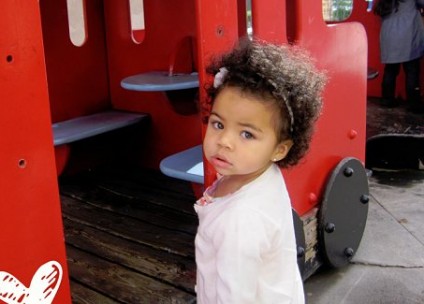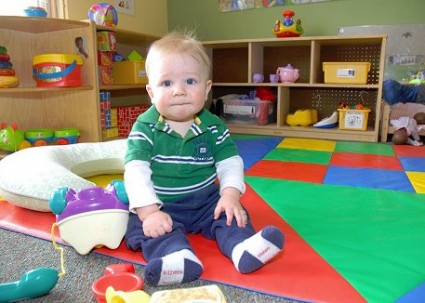Safe & Nurturing Environment
Parents strive to do everything just right for their children-and creating a safe and nurturing environment is as important as ensuring that the child is fed and clothed. But what exactly does “safe and nurturing environment” mean, and what can parents do to achieve this goal?
First, we must recognize, individually and as a community, that a child’s environment at home, in their neighborhood, and at school, play an important part in his development. Second, we must create a game plan on addressing this vital aspect of a child’s growth and development.
The Crib
- Place the crib away from windows, make sure the crib bars are no more than 2 3/8 inches apart,
- Make sure that the corner posts are not 1/16 inch higher than the head board
- Make sure that the mattress fits snugly
- Make sure that the crib sides are locked in their highest position when the baby is in the crib, and that the mattress is lowered and the bumper removed as soon as baby can pull up and stand
- Infant sleepwear should be made of flame resistant materials
- Do not put pillows, quilts, comforters, sheepskins, pillow-like bumper pads, or pillow-like stuffed toys in the crib
The Nursery
- Easily accessible lighting and nightlights
- Toys should be in good repair, safe and age appropriate
- The floor should be clear of toys
- Install outlet covers on all outlets
- Install good electrical cords which are placed along the wall
- Keep all surfaces and walls clear of lead dust
- Old paint should be removed and replaced with lead-free paint
- Make sure window locks function properly and windows have functional and clean screens
- Make sure that all window blinds have short cords that baby can not reach
- Make sure you have a functioning smoke detector in close proximity
- Do not leave baby unattended on changing table or bed
- Create a family escape plan in case of fire or other emergency
The Home
- Provide play structures
- Ensure play is adequately supervised
- Ensure there are no flammable products accessible to children
- Install and maintain functioning smoke detectors and CO2 detectors
- Install locks on windows, doors, cabinets and drawers
- Secure poisons, toxic substances and toxic plants
- Secure firearms
The Yard: Security and Health
- Install fences or other protective measures around water hazards and pools
- Store all yard poisons, fertilizer, lawn equipment and pest control items in an area that in inaccessible to children
Quality of Life
- Provide shade and natural landscaping
- Eliminate yard waste and debris
- Designate an animal free area or waste clean-up plan
- Make sure outdoor toys and equipment are clean and functioning properly
The Block: Community
- Have neighbor’s names and contact numbers
Traffic
- Properly install car seats and booster seat
- Ensure adequate driveway visibility
Disaster Preparedness
- Have a plan to deal with disasters including:
- Fire
- Hurricanes
- Tornadoes
- Flood
- Have a Family Evacuation Plan
- Have an easily accessible First Aid Kit
Family
- The Family should strive to be literate, stable and emotionally supportive. The Family should strive to value effort and achievement, play together, have an active lifestyle and encourages a sense of wonder
- Promotes good nutrition and proper rest
- Is free from abuse, neglect and violence
- Is free from second-hand smoke, drugs and alcohol
The Neighborhood and Greater Community: Infrastructure
- Provide adequate sidewalks, streetlights, traffic control, and fire hydrant
Community
- Join or start a Neighborhood Association
- Designate a block captain for neighborhood watch
Traffic
- Provide streets with limited access
Who is Watching Your Child?
The person you choose to watch your child is one of your most important decisions. Spend time observing your babysitter/partner with your child before leaving them alone together. Watch the interaction. Make sure you and your child are comfortable and the interaction is appropriate.Developed by Healthy Families Florida in partnership with the Florida Child Death Review Committee and Florida Kiwanis.
Healthy Eating
Interested in starting a Community Garden? Click here for the City of Tallahassee’s application for a Community Garden and more.
According to the National Highway Traffic Safety Administration approximately 3 out of 4 parents do not properly use child restraints. You can contact professional to learn how to properly install a car seat and properly buckle your child into the car seat.
Car Seat Installation & Inspection
- Tallahassee Police Department 891-4261 Wednesdays at 10 am
- Leon County Sheriff’s Office 922-3490 Fridays from 8:30 – 10:30 am
- National Highway Traffic Safety Administration – Inspection Station Locator nhtsa.gov/cps/cpsfitting/index.cfm
Playground Safety
Being outside is wonderful for a child’s sensory development, and the local park is a hot spot for families. Evaluate the playground and select equipment that is age and size appropriate.
Each year, more than 200,000 children go to U.S. hospital emergency rooms with injuries associated with playground equipment. Most injuries occur when a child falls from the equipment onto the ground.
Bike Safety
The City of Tallahassee has created a website with safety tips nad all of the local bike paths. Go to biketallahassee.com for all of your biking questions.
Family Violence Online Tutorials
The Institute for Family Violence Studies at the College of Social Work, Florida State University has made online tutorials available to help people detect the signs of family violence. Online tutorials are available for: Meals on Wheels Volunteers & other Elder Services Staff, Animal Abuse Investigators, Food Assistance Program Staff, Community Mental Health Center Staff and more. Go to http://familyvio.csw.fsu.edu/?page_id=25 to participate in these online tutorials.


